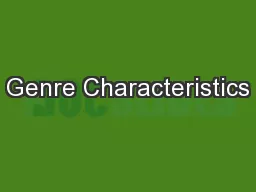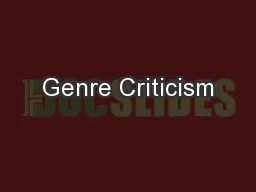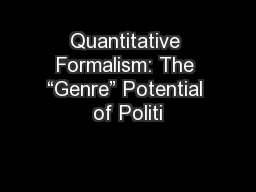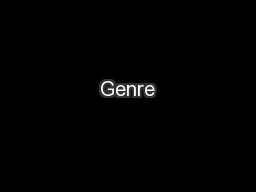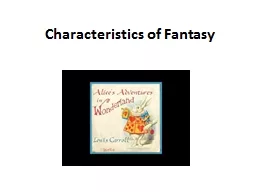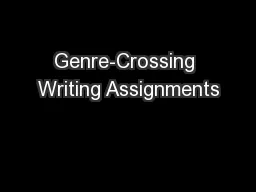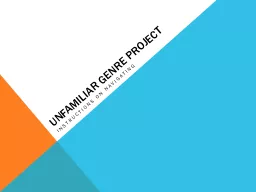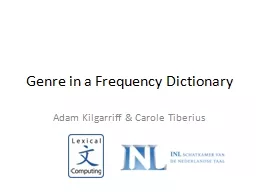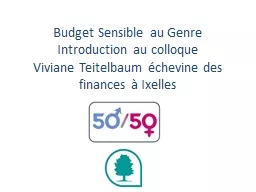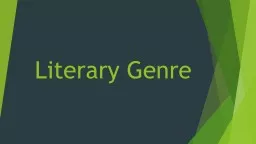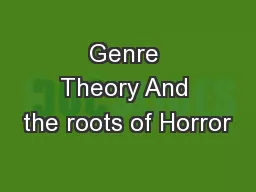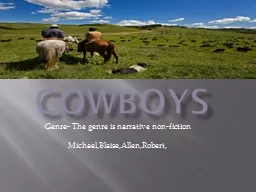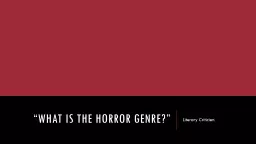PPT-Genre Characteristics
Author : celsa-spraggs | Published Date : 2017-10-08
Fiction Stories that are or they are factual Usually written to although some can teach us lessons How Does Fiction Look Written in and Can be organized in
Presentation Embed Code
Download Presentation
Download Presentation The PPT/PDF document "Genre Characteristics" is the property of its rightful owner. Permission is granted to download and print the materials on this website for personal, non-commercial use only, and to display it on your personal computer provided you do not modify the materials and that you retain all copyright notices contained in the materials. By downloading content from our website, you accept the terms of this agreement.
Genre Characteristics: Transcript
Download Rules Of Document
"Genre Characteristics"The content belongs to its owner. You may download and print it for personal use, without modification, and keep all copyright notices. By downloading, you agree to these terms.
Related Documents

